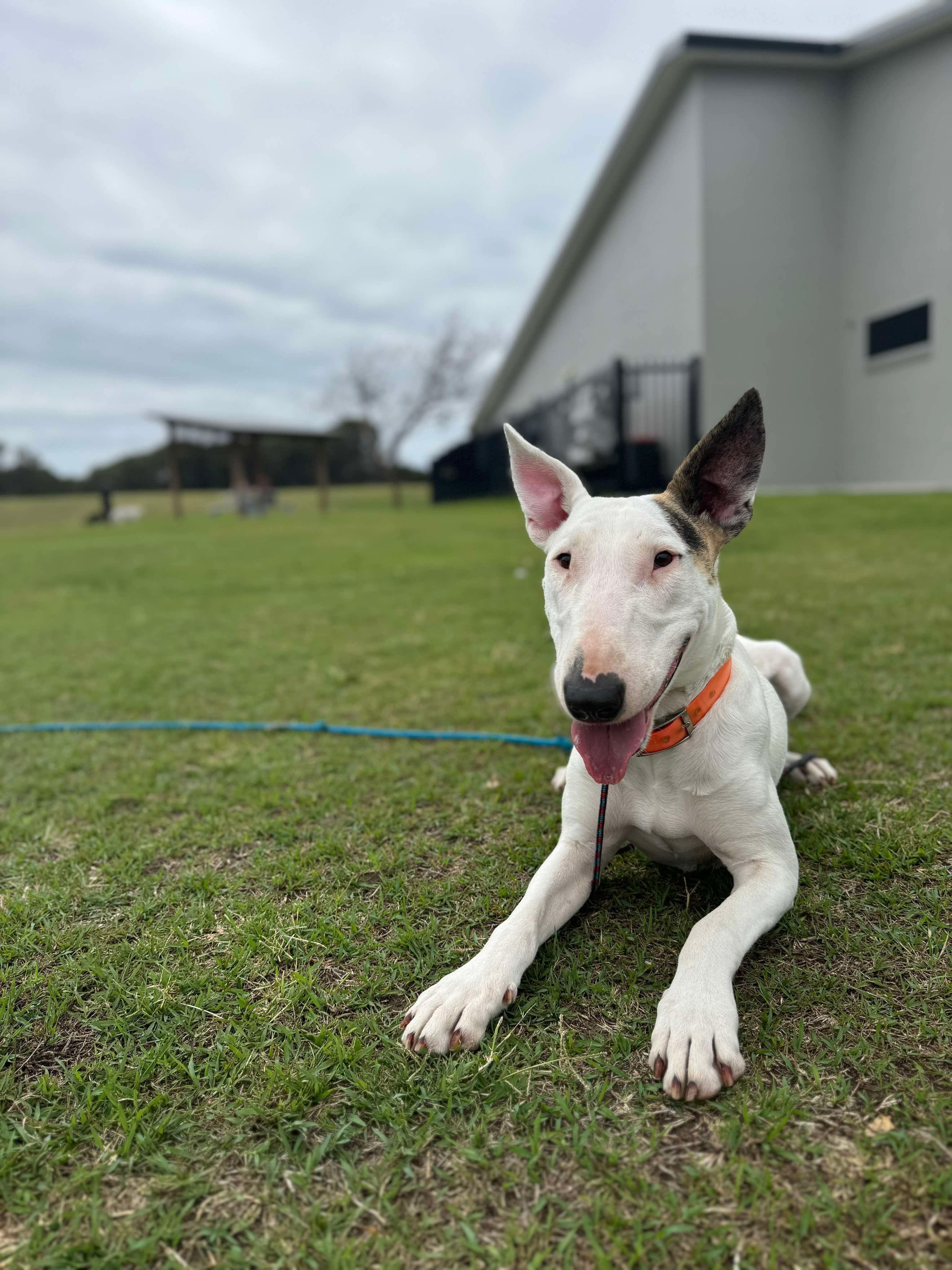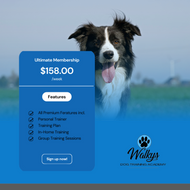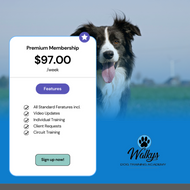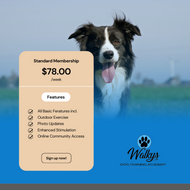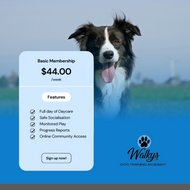January 30, 2025
Teaching a Rock-Solid Down-Stay
The down-stay is one of the most valuable commands in obedience training, reinforcing impulse control, patience, and a dog’s ability to relax on cue. Teaching this correctly requires an understanding of operant conditioning, threshold management, and reinforcement schedules to ensure reliability in real-world scenarios.
This guide will walk you through a technical, step-by-step process to create a durable down-stay using all four quadrants of operant conditioning, showing how each plays a role in the learning process.
Understanding the Learning Process
Before we begin, it's crucial to recognize that the down-stay consists of three primary components:
- The Cue ("Down") – This tells the dog what position to take.
- The Cue ("Stay") – This marks the start of the stay duration.
- The Release ("Break") – This ends the stay and allows the dog to move.
We will also introduce distance, duration, and distraction (the three Ds) gradually to ensure success.
Phase 1: Establishing the Down-Stay Position (Luring & Capturing)
Step 1: Teaching the 'Down'
- Begin in a low-distraction environment with high-value rewards.
- Hold a treat at the dog's nose and slowly lower it to the ground.
- As soon as the elbows touch the floor, use your reward marker ("Yes!") and deliver the treat.
Step 2: Introducing the Stay Cue
- Once your dog reliably goes into a down, give the verbal cue “Stay” (before using any hand signal).
- Wait just one second, then reward (positive reinforcement) and release with “Break.”
- Increase duration in 2-3 second increments over multiple sessions.
💡 Operant Conditioning Breakdown:
- Positive Reinforcement (R+): The treat strengthens the behaviour of staying down.
- Negative Reinforcement (R-): If using leash pressure (mild downward tension), its release upon compliance reinforces the behaviour.
Phase 2: Building Duration & Reinforcement Intervals
Step 3: Reinforcing a Longer Stay
-
Once the dog can hold a 5-second stay, start variable reinforcement (rewarding at different intervals).
-
Use three reinforcement schedules:
- Fixed Ratio: Reward every successful stay.
- Variable Ratio: Reward unpredictably to build persistence.
- Fixed Duration: Reward only after increasing time thresholds.
-
At this stage, do not move away yet—just extend the stay duration.
💡 Operant Conditioning Breakdown:
- Positive Reinforcement (R+): Rewarding for correct behaviour builds association.
- Negative Punishment (P-): If the dog breaks the stay before being released, the reward is withheld.
Phase 3: Introducing Distance & Handler Movement
Step 4: Adding Distance in Small Increments
- Step half a step backward, return immediately, and reward if the dog stays.
- Gradually increase to one full step, then two.
- If the dog breaks position, calmly return and restart at a shorter distance.
💡 Operant Conditioning Breakdown:
- Positive Punishment (P+): If the dog self-releases, calmly resetting (without reward) discourages breaking the stay.
- Negative Reinforcement (R-): A light leash tether prevents breaking and is released when the dog complies.
Phase 4: Introducing Distractions & Real-World Reliability
Step 5: Gradual Distraction Proofing
Once the dog can hold a down-stay for 30+ seconds at 5+ steps away, add mild distractions:
- Clap hands
- Bounce a ball
- Walk around the dog
- Have another person walk by
Each time the dog holds the stay, reward and release.
If the dog breaks:
- Simply reset and try again.
- Avoid using verbal corrections at this stage—let the lack of reward be the consequence.
💡 Operant Conditioning Breakdown:
- Negative Punishment (P-): Withholding the treat if the stay is broken teaches impulse control.
- Positive Reinforcement (R+): Rewards maintain the behaviour despite distractions.
Phase 5: Proofing with Duration, Distance & Distraction Combined
Step 6: Randomising Reinforcement & Adding Real-Life Scenarios
- Vary how long you ask for the stay.
- Mix up your movements—walk away, turn your back, hide behind objects.
- Practice in new environments: parks, cafés, near other dogs.
- Only reinforce stays that meet your criteria (calm, focused, no creeping forward).
💡 Operant Conditioning Breakdown:
- Negative Punishment (P-): If the dog gets up before release, it loses the reward.
- Positive Reinforcement (R+): Success leads to variable rewards, making the stay valuable.
Common Mistakes & How to Fix Them
🔴 Dog Breaks the Stay Immediately
✔ Reduce duration. Reward within one second, then build back up.
🔴 Dog Anticipates the Release & Self-Releases
✔ Mix up reinforcement intervals to prevent prediction.
🔴 Dog Creeps Forward During Stay
✔ Use a visual boundary (mat, platform) to create spatial awareness.
🔴 Dog Fails to Stay with Distance
✔ Reduce the distance and reinforce before the failure point.
Final Thoughts: A Reliable Down-Stay for Life
A well-trained down-stay isn’t just a trick—it’s a lifesaving skill that enhances your dog’s impulse control, relaxation, and overall obedience. By following technical reinforcement strategies, understanding operant conditioning, and systematically increasing duration, distance, and distraction, you’ll develop a dog that can hold a down-stay even in high-pressure environments.
Want to take this training even further? Join Walkys Dog Training Academy for real-time coaching and personalised feedback from expert trainers!

